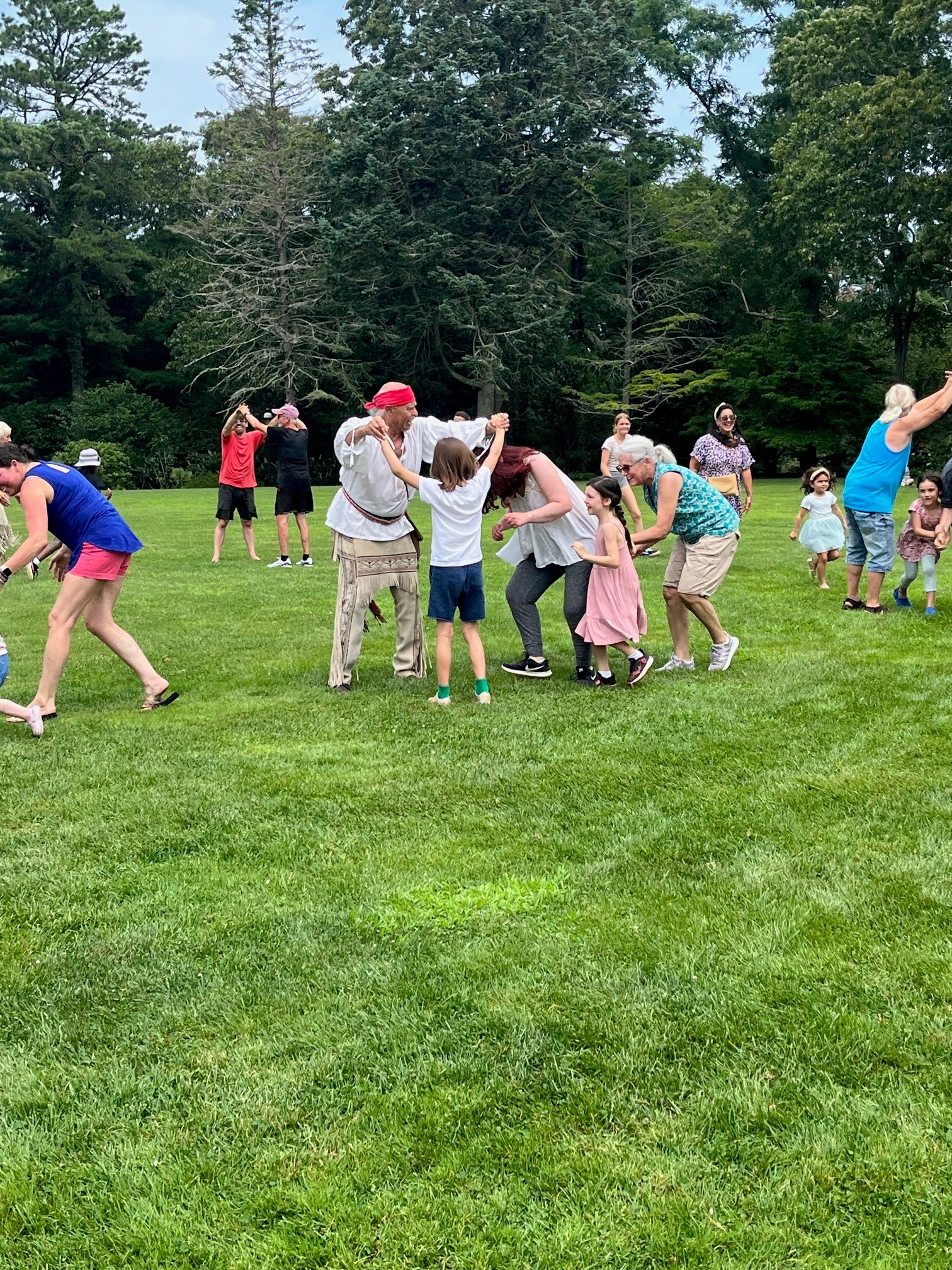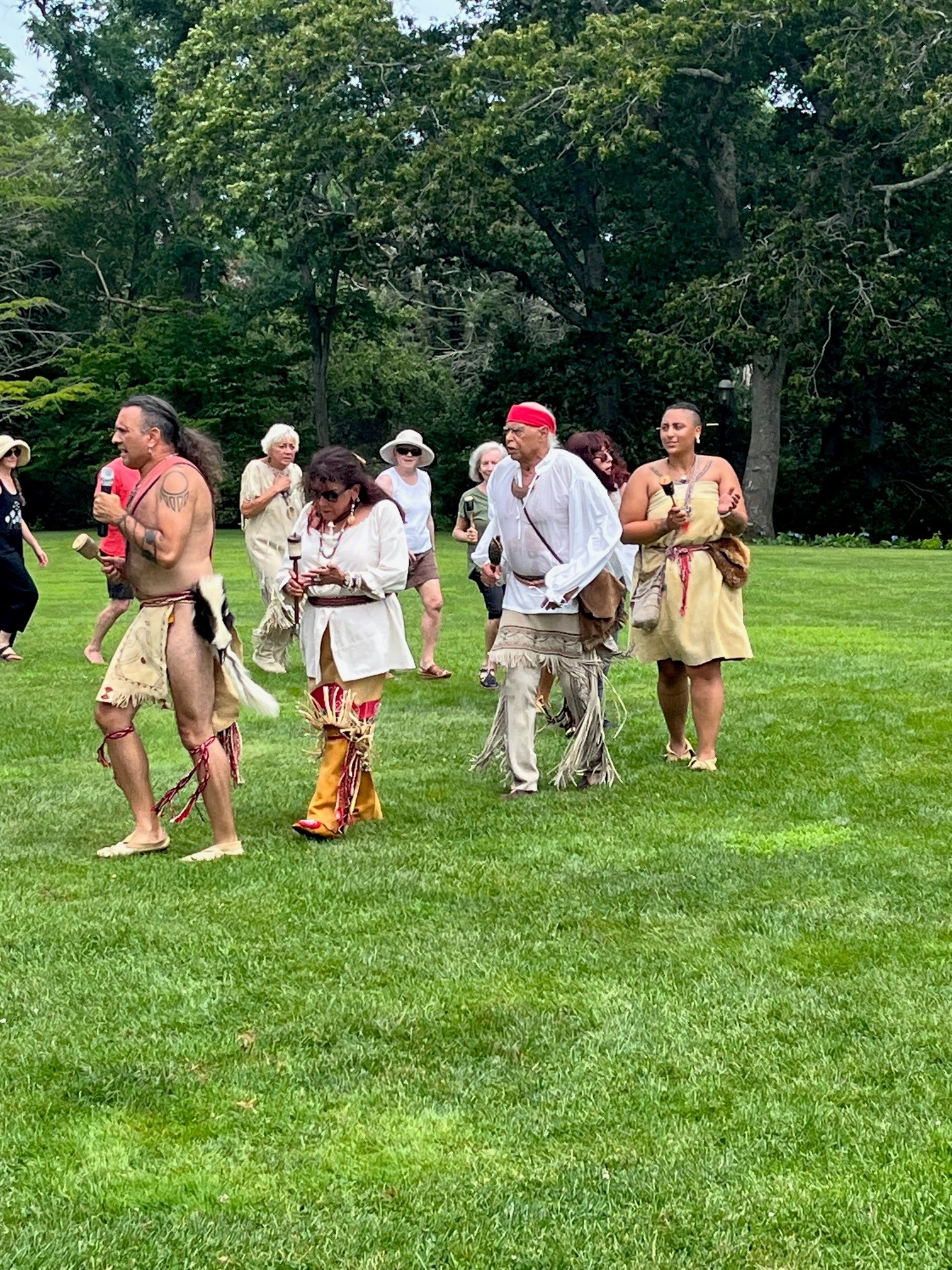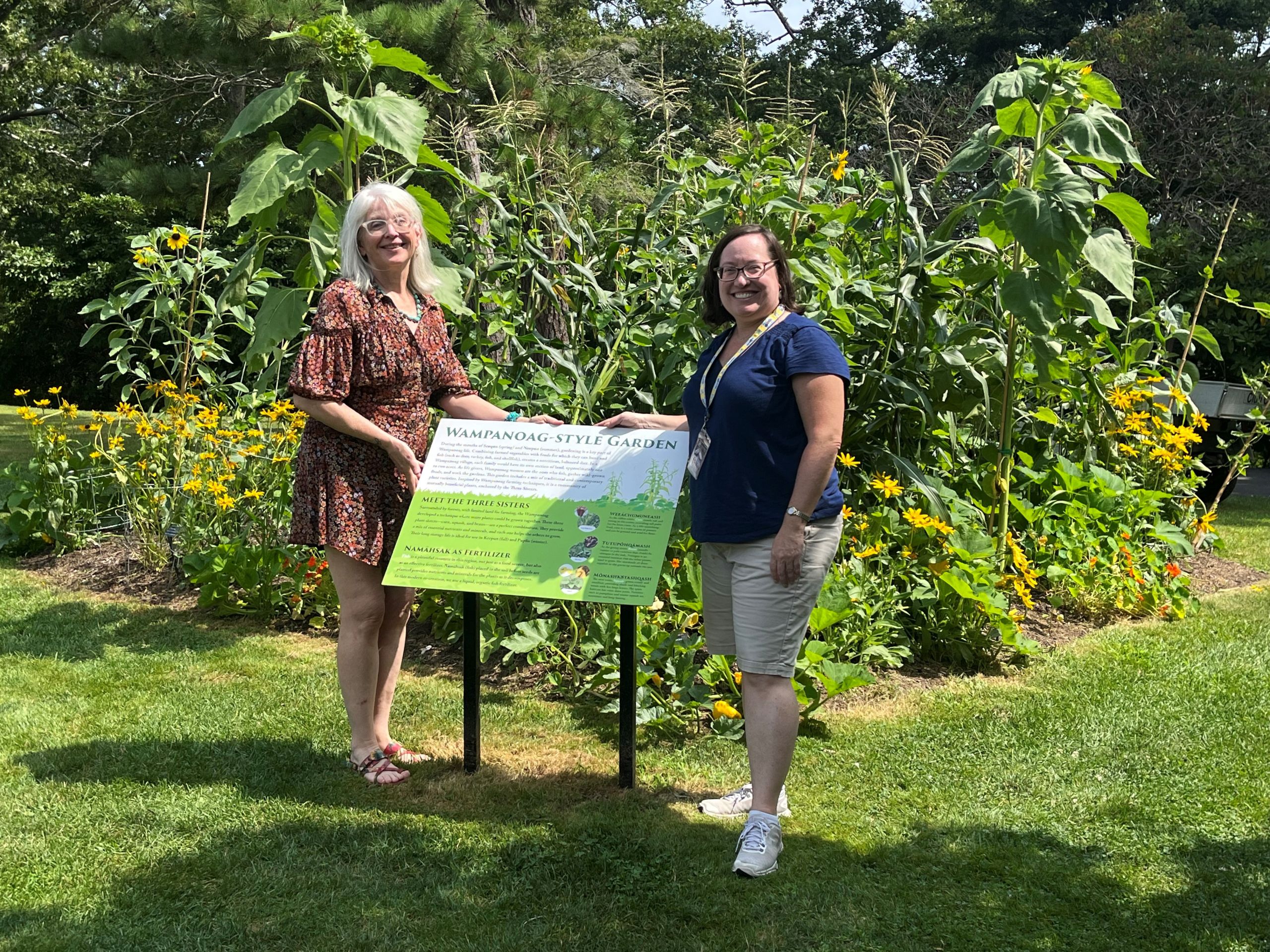Wetu: A Traditional Wampanoag Dwelling
Location: Near Parade Field
Open For Viewing: May 10 – October 19th, 2025
The Wampanoag have lived in what is now southeastern Massachusetts for more than 12,000 years. They were the first tribe encountered by the Pilgrims when they landed in Patuxet (what is now Plymouth) in 1620. This exhibition features a reproduction of a wetu and a Wampanoag-style demonstration garden. A wetu is a Wampanoag seasonal house, used during the warmer months and usually built near the coast where summer resources are abundant. Traditionally, it was constructed entirely out of readily available natural materials such as cedar saplings, bark, or cattail reeds.
For this project, Heritage has partnered with SmokeSygnals, one of the Northeast’s leading Native American creative agencies. Comprised of members of the Mashpee Wampanoag Tribe, the SmokeSygnals team constructed the wetu over a one-week period in April and May 2021, following centuries-old methods (along with the help of some modern power tools). In August 2021, Robert Peters (Mashpee Wampanoag) designed and painted several hemp mats to adorn the interior of the wetu. The completed wetu combines both natural and synthetic materials. The exhibit also includes a Three Sisters Garden, demonstrating traditional Wampanoag farming techniques and featuring historical varieties of corn, squash, and beans. To learn more about our Three Sister’s Garden, click here.
“I have to say that we truly have fallen in love with the idea of this exhibit. So much of our work has focused on bringing the Native experience to the public and this just feels like such an authentic way to achieve that goal. Delivering the structure will absolutely spark interest from your visitors.”
– Steven Peters, Creative Director, SmokeSygnals

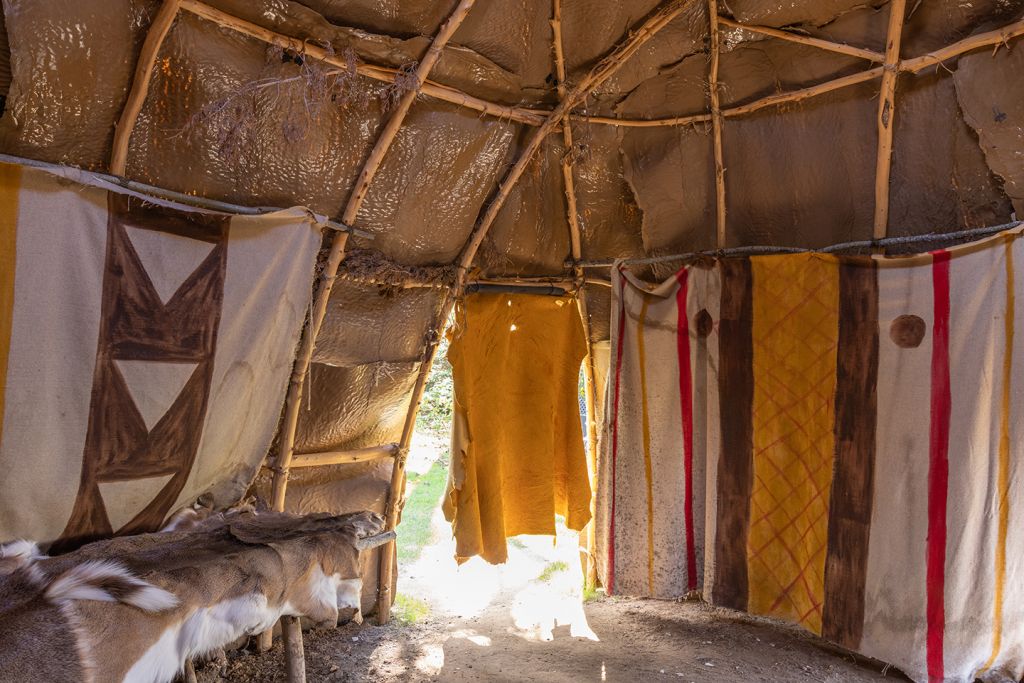
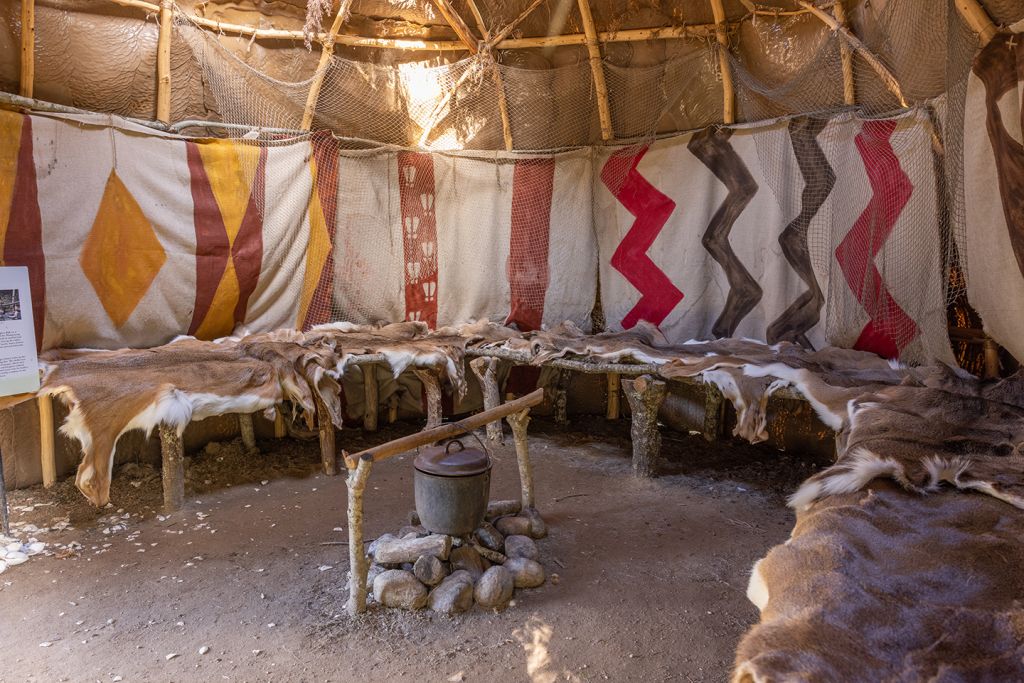
The Wampanoag Mush8n
Heritage has commissioned SmokeSygnals, a local Wampanoag-run creative agency, to build a mush8n (pronounced mishoon) that was installed here at Heritage on Wampanoag Heritage Day, July 29, 2023. Visitors were ab;e to watch the last steps of the burning/carving process. Now that it is complete, visitors are able to climb aboard and try sitting in it. This vessel represents the Wampanoag’s strong ties to the ocean—something that has been central to their coastal lifestyle for thousands of years. the mush8n is located on the far side of the parade field on the other side of the paved path.

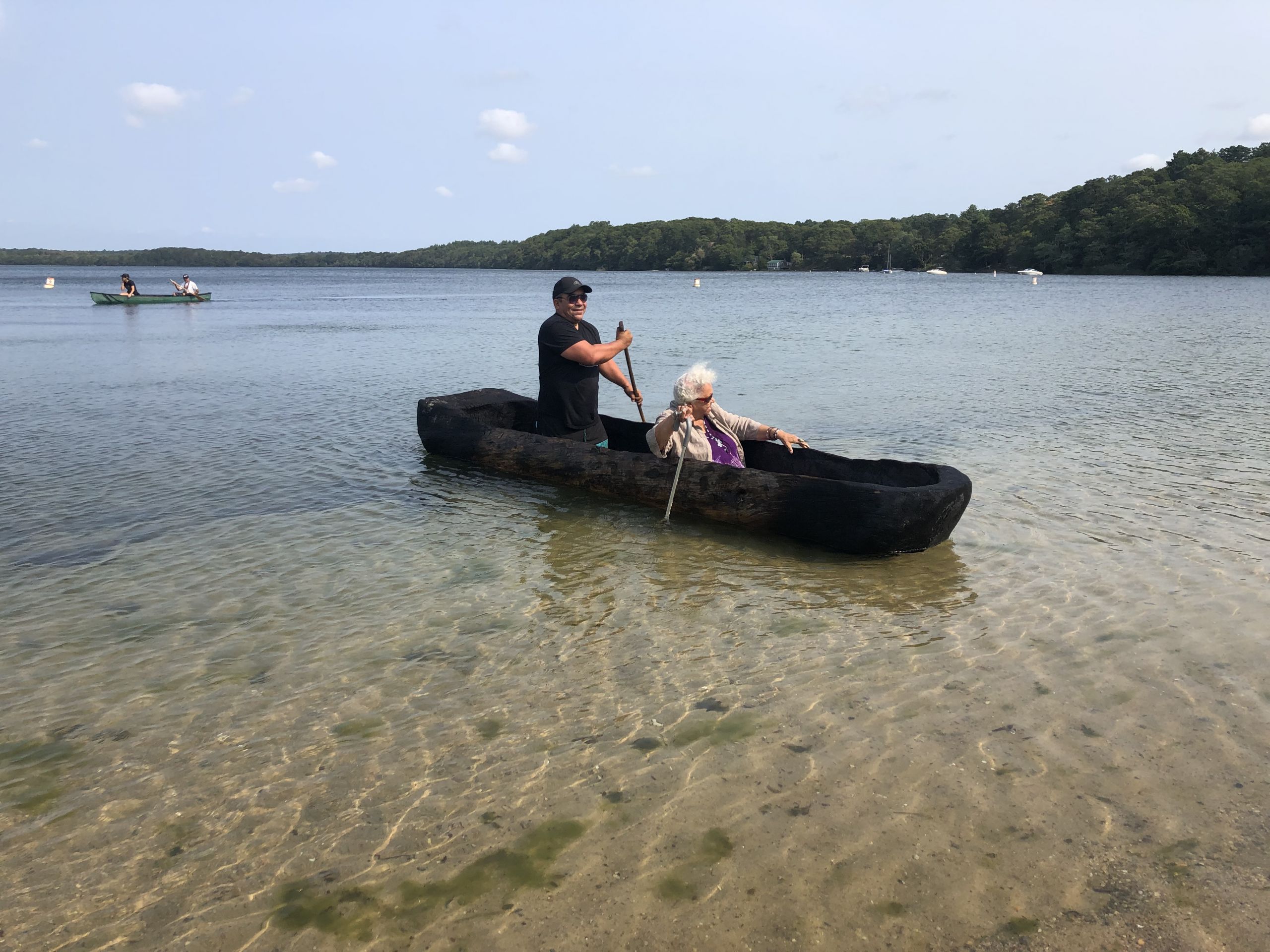

The Wôpanâak (or Wampanoag in English, pronounced either wamp-a-NO-ag or WAMP-ah-nog) have lived in what is now Southeastern Massachusetts and Rhode Island for more than 12,000 years. We have evidence to believe that the area that is now the Parade Field was, at one time, a Wampanoag summer dwelling site. Artifacts such as an adze, fishing weights, and arrow points have been found there. Stories from early Sandwich colonial residents describe wetus on the land as well.
Since 2020, Heritage has partnered with SmokeSygnals, a Native American creative agency based in Mashpee, Massachusetts, to share Wampanoag culture and history with visitors. The Wampanoag wetu and Three Sisters-style garden are two recent outdoor exhibits that delve into the pre-contact history of Wampanoag people living in the region while also sharing what these traditions mean to tribal members today.
In late July of 2023, SmokeSygnals was back with a new exhibit: a mush8n (boat), located in a quiet grove just off of Shawme Pond and the Parade Field. That year on select days, the SmokeSygnals team was on hand to talk with visitors and demonstrate the burning and carving construction process.
SmokeSygnals built the mush8n following a centuries-old method that involves felling a tree (in this case, a white pine), and doing a controlled burn of one side to hollow out the trunk and create the boat shape. Burning and then carving away the charred material makes for a more efficient method. The continuous burning process is time-consuming, usually taking multiple days.
For Wampanoag Tribes, water–whether that be ponds, rivers, or ocean–plays a key part of life. In the pre-contact era, getting around involved walking, running, or by mush8n, which means ‘boat.’ The 12’ mush8n at Heritage is suitable for two people while much larger ones could hold up to forty people. With rivers as highways, Wampanoag people could use a mush8n to travel, fish, and interact with other tribes. Visitors will be able to climb in and experience what it feels like first-hand.
Images of Wampanoag Heritage Day:







